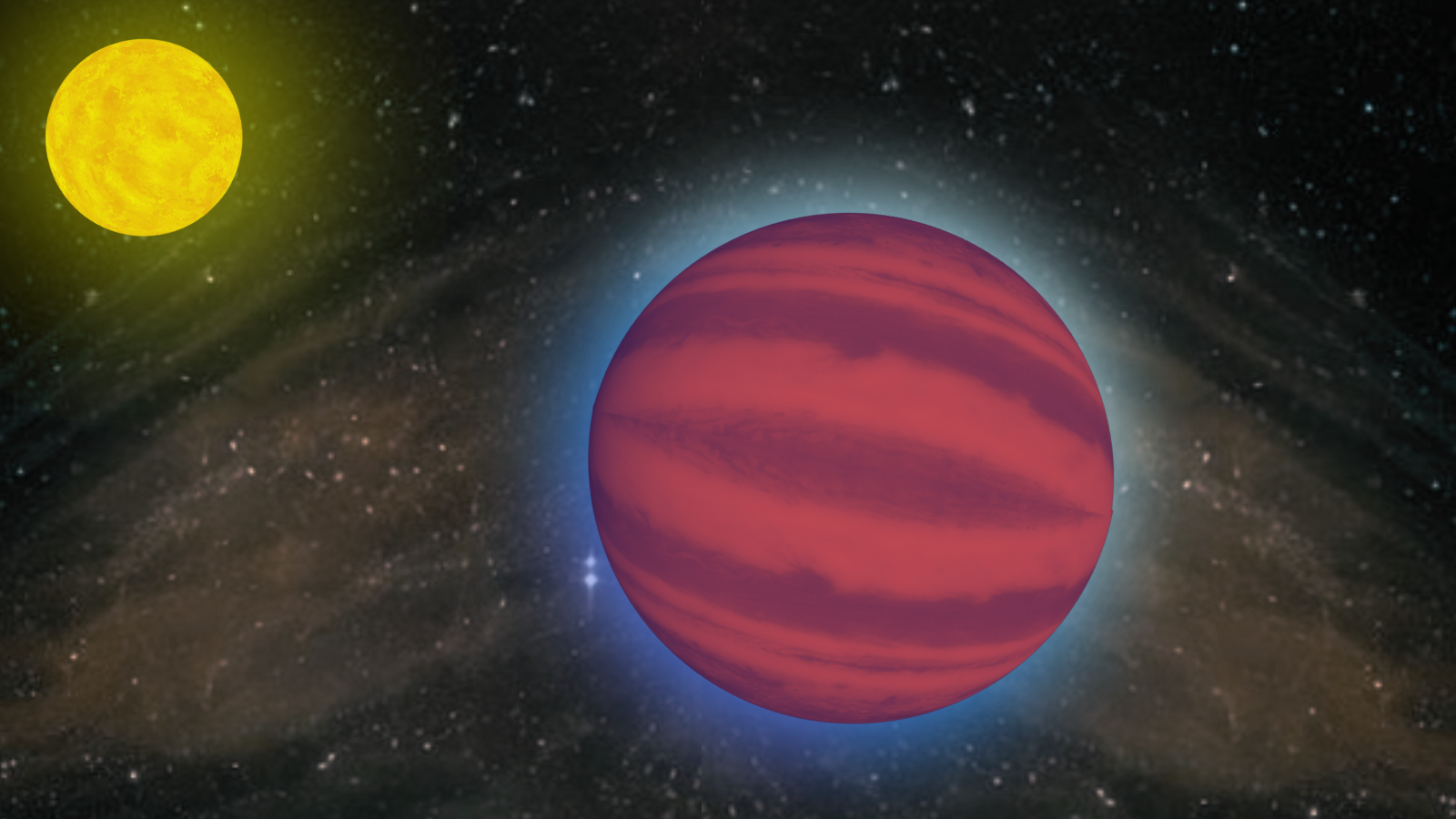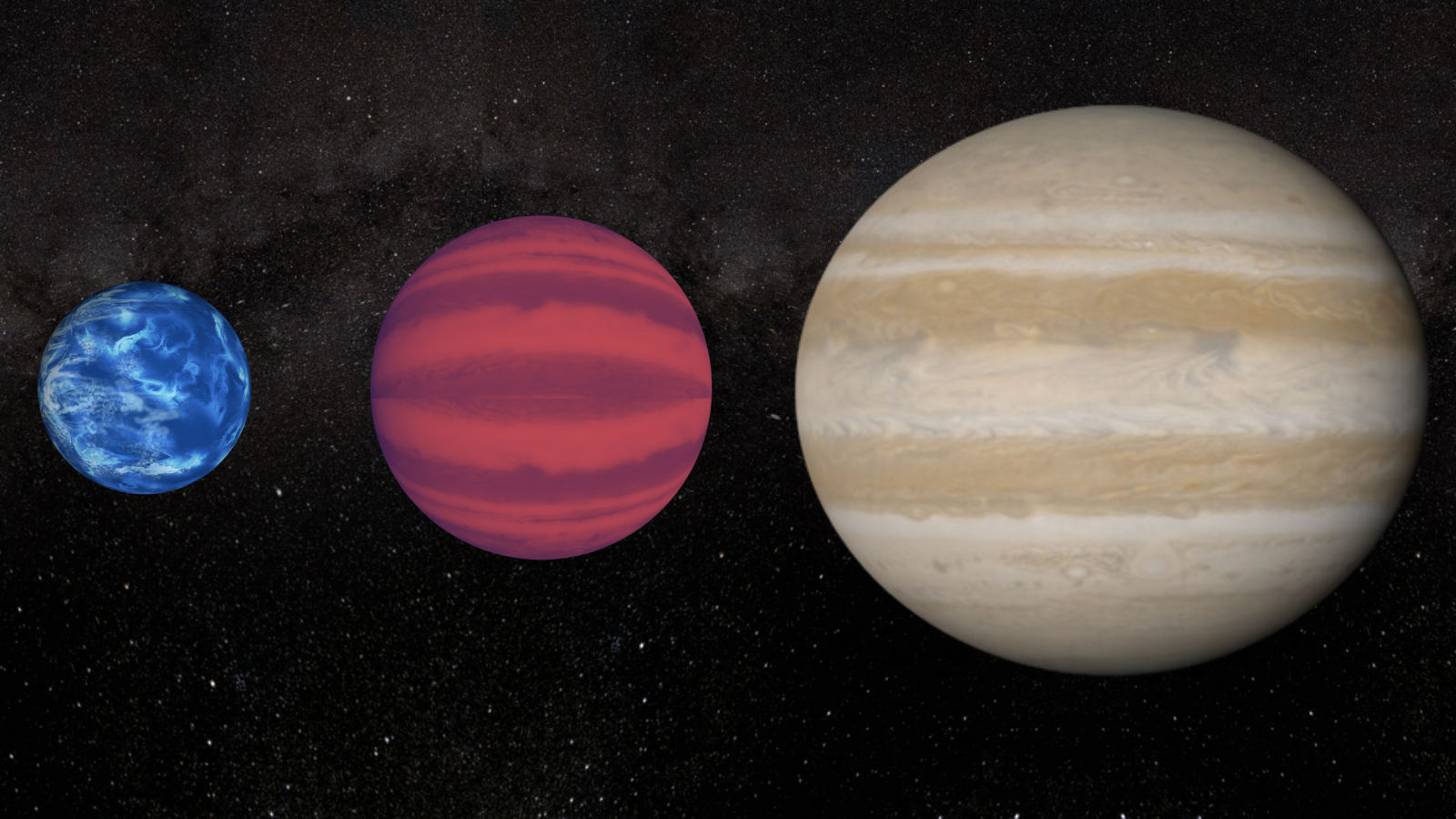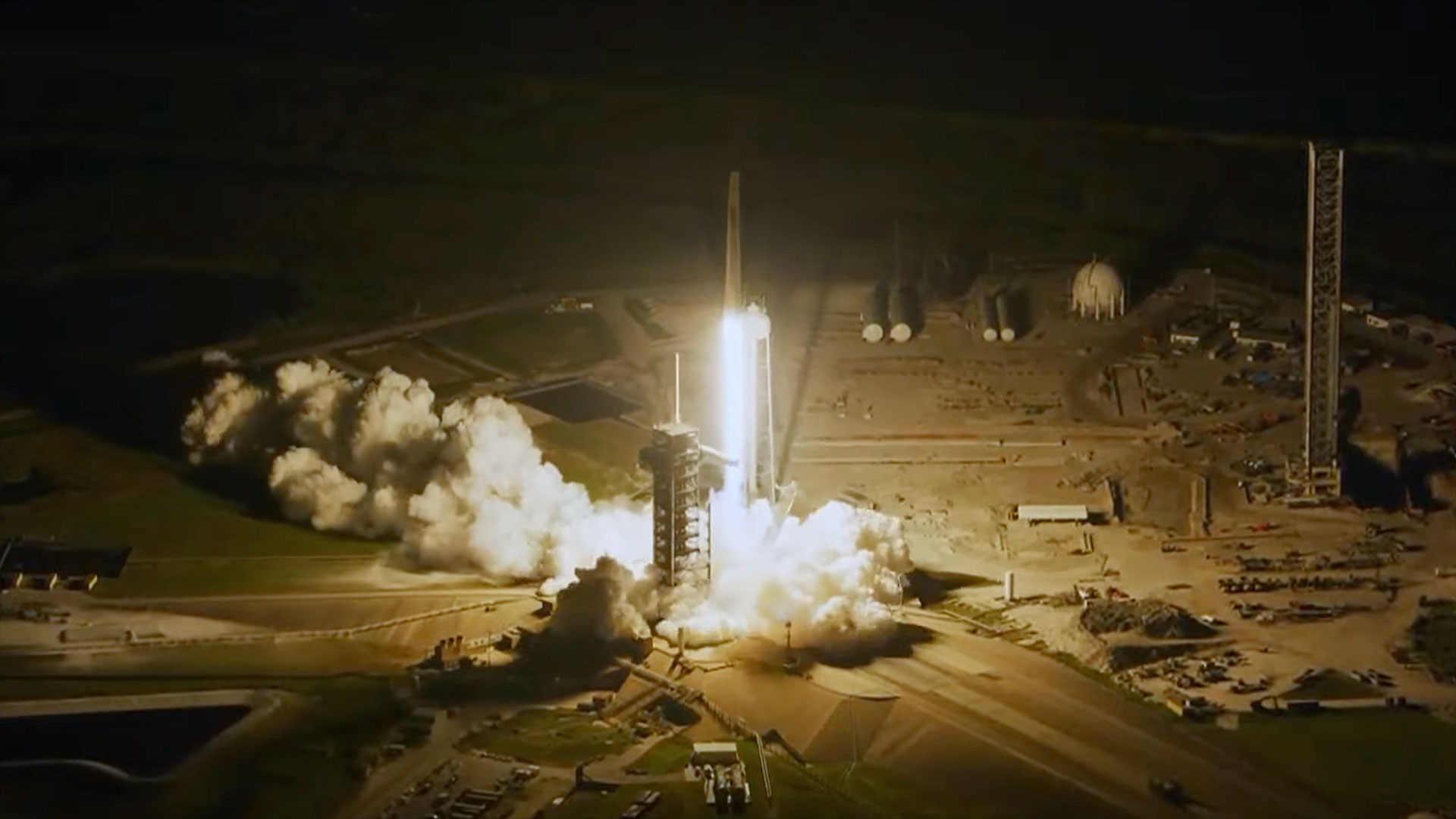Evidence of water found in atmosphere of mysterious 'metal god of war' exoplanet
Named for the Gaelic god of war, Smertrios has a composition and density that are a challenge to planet formation models.

Astronomers may have discovered the presence of water in the atmosphere of a blisteringly hot planet that is also one of the most "metal" worlds ever spotted. The planet's formation remains a mystery, one that could be solved by the discovery.
The extra-solar planet, or "exoplanet," in question is HD 149026 b, which is also known as "Smertrios," meaning the "Purveyor" or "The Provider," worshiped as the god of war in the Gaelic tradition. Smertrios orbits a yellow subgiant star called HD 149026, located around 247 light-years from Earth.
The planet is around 4 million miles from its parent star, completing an orbit in under three Earth days. With a width of about three-quarters that of Jupiter, Smertrios is classed as a "hot Saturn," a class of planets taking its name from the solar system's smaller gas giant.
The proximity of Smertrios to its star means that it is tidally locked with a permanent dayside that always faces its host star, where temperatures soar as high as 2,600 degrees Fahrenheit (1,420 degrees Celsius). It's relatively cooler nightside always faces out into space. But the density and composition of Smertrios, discovered in 2005 as it crossed or "transited" the face of its star, are what really make it really strange.
Related: Extreme 'hot Jupiter' exoplanet stinks like rotten eggs and has raging glass storms
"A hot Saturn is a type of exoplanet called a 'hot gas giant.' Hot gas giants are exoplanets that have sizes similar to Jupiter or Saturn but orbiting their host stars in extremely close distances. Typically, they have an orbital period of less than ten days, meaning that one year on those planets could be less than a week!" Sayyed Ali Rafi, part of the team behind the discovery and an astronomy researcher at the University of Tokyo, told Space.com. "This planet is of particular interest because it is one of the most metal-rich and densest gas giants that we know of so far."
When astronomers like Ali Rafi refer to "metals," they are elements that are heavier than hydrogen and helium. When the James Webb Space Telescope (JWST ) looked at Smertrios in 2023, the powerful space telescope found that the planet's metallicity, its fraction of metals to hydrogen, is much higher than most hot Saturns and larger hot Jupiters. This ratio is also much greater for Smertrios than it is for solar system giants Jupiter and Saturn.
Breaking space news, the latest updates on rocket launches, skywatching events and more!
Metals are normally considered to be conversely proportional to mass in gas giants. That means the bigger a gas giant gets, the less metals it should have. Smertrios defies this trend. The planet was also found to have an anomalously large solid core, which is why its density is so high.
"The composition of the planet seems not to be compatible with current formation scenarios that we have for hot gas giants, and it is still a mystery to this day," said Ali Rafi. "This signifies the importance of observing the planet’s atmosphere as it could help reveal the planet's formation history through its atmospheric properties such as its metallicity and carbon to oxygen ratio."
Which way do the winds blow on Smertrios?
To investigate the strange atmosphere of Smertrios and hopefully discover why the planet is so "metal," Ali Rafi and colleagues turned to the CARMENES spectrograph, an instrument at the Calar Alto Observatory in Spain.
Elements and chemical molecules absorb and emit light at characteristic wavelengths. When a planet like Smertrios transits the face of its star, the elements in its atmosphere leave "fingerprints" in the filtered starlight. CARMENES can read these fingerprints and tell astronomers what that atmosphere is made of.
The investigation of Smertrios with CARMENES revealed the fingerprints of water vapor. This can help to better constrain the abundance of other elements in the planet's atmosphere.
Ali Rafi explained that assuming elemental oxygen is more abundant than elemental carbon in the atmosphere of hot gas giants such as Smertrios means water and carbon monoxide are two of the most abundant "tracer" species that can explain the nature of that atmosphere.
"Hence, if we can constrain the abundance of both molecules, we are able to constrain the atmospheric carbon to oxygen ratio, which is very important because it could act as a kind of tracer characteristic to the formation and evolution history of gas giant planets like HD 149026 b," Ali Rafi added. "Finding water in the atmosphere is the first step to such characterization, hence its importance."

However, this wasn't all the team discovered about Smertrios. The hot Saturn planet delivered quite a surprise for the researchers.
Usually, on hot gas giants that are tidally locked, the massive difference in temperature between the hot dayside and the cooler nightside creates extremely fast atmospheric winds that can rage as fast as 5,000 mph (8,046 kph).
These usually blow from the dayside to the nightside of those planets because winds on most other planets move from high-temperature to cold-temperature regions. However, the winds of Smertrios appear to be blowing in the opposite direction, from the nightside to the dayside of the planet.
"Because we are seeing the planet when it transits, winds blowing to the nightside means that they blow to the observer's direction, and it would cause the planetary absorption spectrum to be blue-shifted," Ali Rafi explained. "However, what we found is that it is red-shifted, and that was a big surprise to us. We can think of several scenarios that might explain the fact that there might actually be winds that blow from the nightside to the dayside."
One possibility is these winds are happening are possible on deep atmospheric layers, causing a red-shifted spectrum, Ali Rafi explained. The researcher added another possibility is the orbit of Smertrios is not circular but is flattened or "eccentric," and this could lead to a shift in the spectrum the team didn't account for.
"We need additional observations to confirm any of these scenarios or even if there are any other alternatives," Ali Rafi added.
The astronomers will now continue to investigate this strange hot Saturn in order to confirm the detection of water vapor.
"More transit observation data on this planet are needed to follow up on our result. We are now working on confirming the water evidence and searching for other atmospheric species, as well as constraining their abundances to estimate the metallicity and the carbon-to-oxygen ratio more precisely," Ali Rafi concluded. "Hopefully, this could help us in elucidating the formation and evolution history of Smertrios!"
A pre-peer-reviewed version of the team's research is published on the paper repository site arXiv.
Join our Space Forums to keep talking space on the latest missions, night sky and more! And if you have a news tip, correction or comment, let us know at: community@space.com.

Robert Lea is a science journalist in the U.K. whose articles have been published in Physics World, New Scientist, Astronomy Magazine, All About Space, Newsweek and ZME Science. He also writes about science communication for Elsevier and the European Journal of Physics. Rob holds a bachelor of science degree in physics and astronomy from the U.K.’s Open University. Follow him on Twitter @sciencef1rst.
